Struggling to turn leads into customers despite deploying multiple nurturing tactics? You’re not alone. Many marketers find themselves frustrated by low conversion rates, even after investing in sophisticated marketing tools and strategies. The challenge lies not just in capturing leads but in guiding them effectively through each stage of the funnel.
This post dives deep into advanced lead nurturing strategies that go beyond the basics. From crafting personalised drip campaigns to executing multi-channel engagements, we’ll explore actionable techniques that can transform your approach. You’ll discover how to seamlessly integrate automation without losing the personal touch and how to measure success with precision.
- Master the Stages of Lead Nurturing: Understand the critical transitions between awareness, consideration, and decision stages to guide your leads effectively through the funnel.
- Implement Advanced Personalisation: Use dynamic content and behavioural segmentation to create highly targeted nurturing experiences that resonate with each lead’s unique journey.
- Execute Effective Drip Campaigns: Structure your email sequences to nurture leads progressively, adjusting content based on real-time responses and engagement levels.
- Leverage Multi-Channel Strategies: Coordinate your nurturing efforts across email, social media, SMS, and direct mail to maintain consistent engagement and maximise touchpoints.
- Optimise with Automation: Choose the right tools to automate repetitive tasks while ensuring your interactions remain personalised and human-centric.
- Track and Improve Metrics: Focus on key performance indicators like lead scoring, engagement rates, and conversion timelines to continually refine your strategies.
- Avoid Common Pitfalls: Stay vigilant against over-automation and ensure alignment between sales and marketing to avoid derailing your nurturing efforts.
What is Lead Nurturing?
Lead nurturing is fundamentally about fostering relationships with leads who are not yet ready to make a purchase. It’s a strategic process aimed at nurturing leads by anticipating their needs based on various factors such as their job title, role, industry, and stage in the buying journey. The goal is to keep them engaged by offering tailored content that aligns with their specific situation—whether that be technical whitepapers, ebooks, or webinars. When executed well, effective lead nurturing strategies can build significant brand loyalty well before a prospect is primed to buy.
By harnessing latent demand, businesses can transition unqualified leads into opportunities and ultimately drive more revenue. Moreover, nurturing leads supports the acceleration of active opportunities by equipping prospective buyers with the relevant information they require to make informed purchasing decisions. In essence, lead nurturing is about guiding your buyers through their educational journey, and it works most effectively when triggered by a prospect’s specific actions or behaviours.
Lead Nurturing Basics
One common misconception is that lead nurturing revolves solely around email communication. In reality, it’s much more nuanced—it involves designing a workflow or series of strategic communications, where each interaction has a precise objective, whether that’s progressing the lead to the next stage of the funnel or encouraging another desirable action.
A key element of lead nurturing best practices involves gathering vital information through well-crafted questions, which allows for the continual refinement of your messaging. This process helps tailor content to meet the prospect’s evolving needs as they move through the buying cycle. Trust-building is paramount, and the more you understand your prospects, the more you can deliver relevant content, messaging, and assets. Every nurturing journey should be uniquely designed based on specific customer profiles.
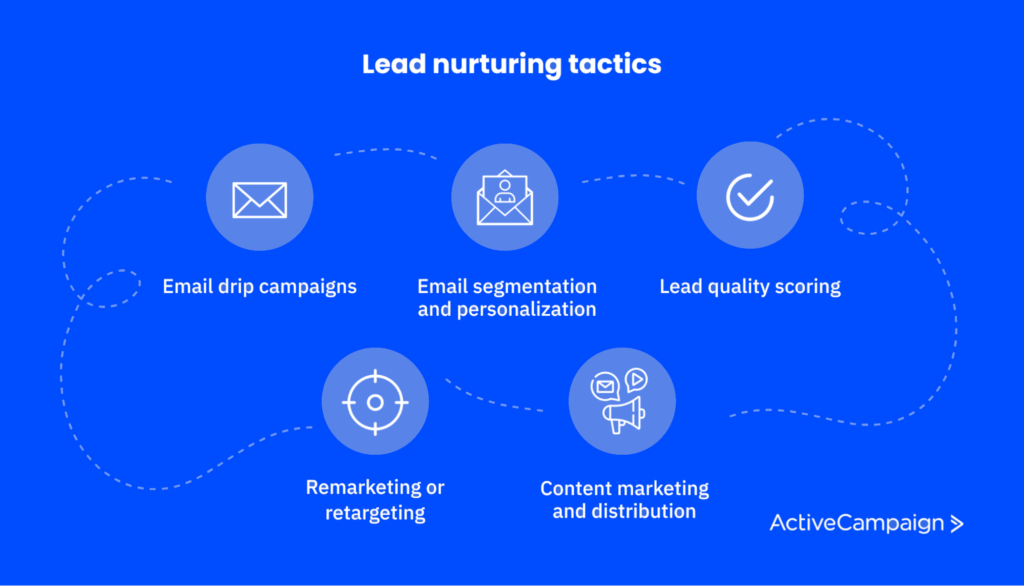
Key Elements of a Successful Lead Nurturing Process
Segmenting
Segmentation is a cornerstone of lead nurturing tactics, allowing you to differentiate your messaging based on criteria such as title, role, industry, or sales stage. By doing this, your content remains relevant and resonates with each recipient, helping to reduce unsubscribes and keep engagement levels high.
Customer Nurturing
Lead nurturing solutions aren’t solely for prospects—existing customers also benefit from continued nurturing. When onboarding a new customer, for instance, you can segment them by user role, whether they are a “champion,” “power user,” or “executive sponsor.” This approach allows you to tailor onboarding and adoption strategies to their specific needs, ensuring a seamless transition and fostering long-term engagement.
The Principle of ‘Give to Get’
At two pivotal stages of the buying cycle—when a lead first interacts with your organisation and when they make a purchase—you have prime opportunities to gather insightful data. During these touchpoints, increasing the number of interactions is key, allowing for deeper engagement and the collection of valuable insights.
Customer Focus and Personalisation
Personalisation is critical in lead nurturing. By addressing customers by name and offering assets tailored to their industry, you ensure each communication is highly relevant and impactful. Each message should serve a purpose and answer the critical question, “What’s in it for the buyer?” If it doesn’t, it likely lacks value for your lead nurturing programme.
Progressive Profiling
Progressive profiling, which allows you to gather information incrementally over time, plays a crucial role in building a robust database of actionable insights. This approach enables you to avoid bombarding prospects with forms at every touchpoint. Instead, you strategically collect one or two additional data points each time a prospect engages with an offer. For example, a nurturing journey might begin with ungated thought leadership content, followed by a gated case study, and finally direct the prospect towards a demo with no additional barriers.
What Matters Most?
Developing high-value content that addresses specific lead pain points typically fosters deeper connections, enhancing the effectiveness of your marketing efforts. Clients often discover that utilising segmentation and personalisation leads to tailored communication, making leads more engaged and responsive. Furthermore, emphasising relationship building through genuine interactions and consistent value provision can significantly enhance lead loyalty and trust over time.Get In Touch
What is the difference between lead generation and nurturing leads?
To fully grasp the importance of lead nurturing strategies, it’s essential to distinguish them from lead generation. While lead generation focuses on attracting potential customers and initiating contact, nurturing leads is about guiding them through the buyer’s journey once they’ve shown initial interest. Let’s explore the differences through various industry examples.
Example in a Startup Context
For a startup, lead generation typically involves launching targeted online campaigns—whether through social media ads or search engines—to capture the attention of potential customers. The goal at this stage is to encourage sign-ups for newsletters, downloads of free trials, or other lead magnets, providing the business with a pool of potential leads. However, the real work begins once these leads enter the funnel.
Lead nurturing tactics come into play by delivering personalised follow-up emails, offering valuable content, and holding one-on-one consultations with interested prospects. These lead nurturing solutions aim to educate and engage potential customers, ensuring they continue moving down the funnel towards a purchasing decision. Ultimately, nurturing leads through this process is what converts them from prospects into paying customers, establishing long-term loyalty.
Example in a Consulting Context
In the consulting industry, lead generation might involve organising webinars or hosting workshops on key topics that resonate with professionals in need of tailored solutions. The attendees who provide their details become leads, but to successfully convert them into clients, a strategic lead nurturing programme is required.
Consulting firms employ lead nurturing best practices by sharing in-depth case studies that highlight their success stories, offering bespoke consultations, and showcasing their expertise in specific areas of concern. These tactics build trust and address client pain points, progressively guiding prospects towards the final purchasing decision. The relationship-based nature of consulting means that effectively nurturing leads can turn one-time attendees into long-term clients who trust the firm’s ability to deliver.
Source: Forrester
Example in a Digital Marketing Agency Context
A digital marketing agency’s approach to lead generation often involves producing insightful blog posts, optimising content for search engines, and creating targeted landing pages to draw in potential clients. Once a lead shows interest by downloading a resource or filling out a contact form, the agency must transition from generating leads to nurturing leads.
Lead nurturing strategies in this context might include offering free marketing audits, sending tailored recommendations based on the prospect’s specific needs, and providing ongoing support to demonstrate the agency’s value over time. The goal here is to not only convert the lead into a client but also to establish a partnership that could lead to a long-term retainer agreement. By aligning lead nurturing tactics with the prospect’s needs, the agency positions itself as a trusted advisor, driving sustainable business growth.
What are the elements of lead nurturing
An effective lead nurturing strategy requires a multi-faceted approach that leverages segmentation, goal setting, impactful messaging, diverse content, and precise timing. Let’s break down the key components to ensure your efforts in nurturing leads yield tangible results.
1. Segment Your Audience
Segmentation is crucial for crafting personalised messages that resonate with specific groups. It goes beyond basic demographics, such as job title or location, to include behavioural insights, pain points, and individual interests. By dividing your audience into these more manageable, precise groups, you can implement lead nurturing tactics that connect on a deeper level.
How to segment effectively:
- Define the customer journey: Understand the typical steps your customers take before making a purchase. This will help you identify the moments where your messages can make the greatest impact.
- Analyse your ideal customer: Who are your top-performing customers? Build a detailed profile based on their characteristics, behaviours, and motivations.
- Test and refine: Continuously track the performance of your segmentation efforts through analytics and adjust your approach as needed to ensure the best results.
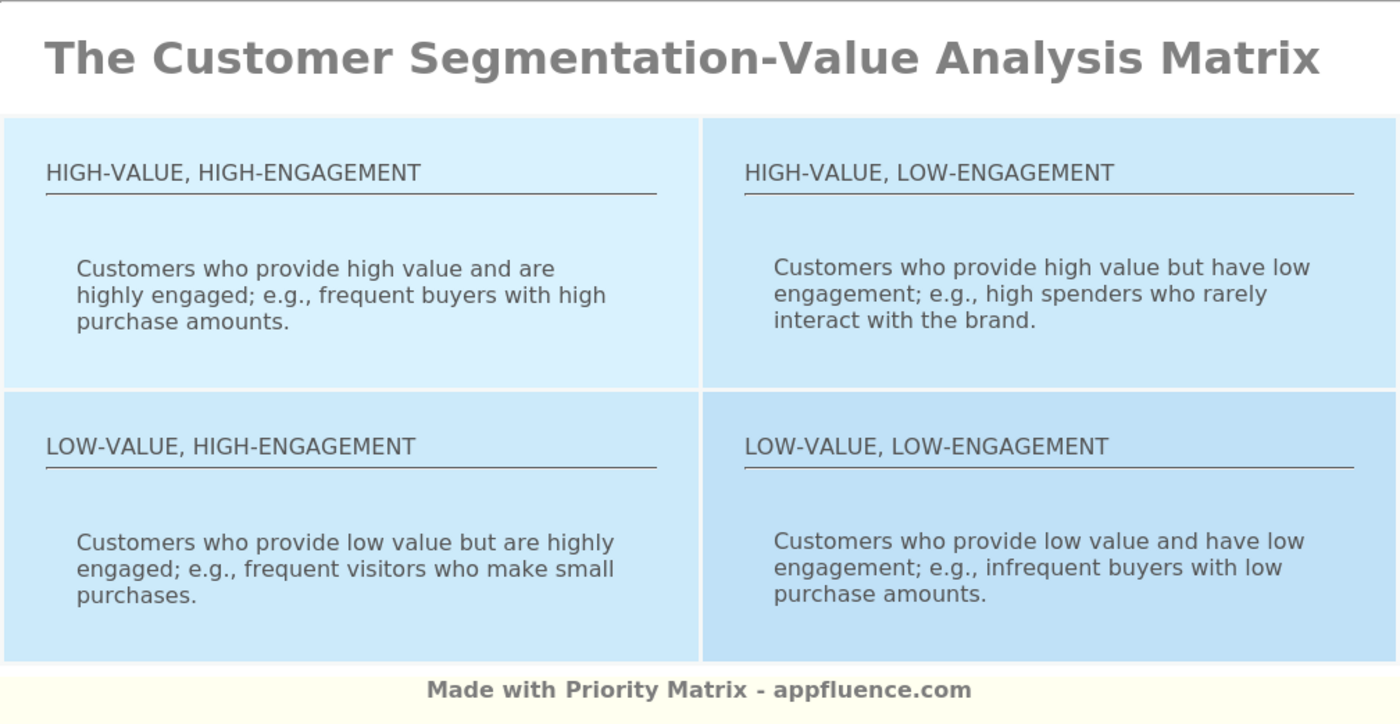
2. Define Your Goals
A clear set of goals is the foundation of any successful lead nurturing strategy. Without well-defined objectives, it’s easy to lose direction. Whether your aim is lead generation, increasing sales, improving customer retention, or strengthening brand loyalty, every part of your nurturing campaign should serve a specific purpose.
Tips for setting effective goals:
- Create SMART goals: These are Specific, Measurable, Achievable, Realistic, and Time-bound. SMART goals offer clarity and focus, making it easier to track progress.
- Establish key metrics: Determine what success looks like, whether it’s an increase in awareness, higher acquisition rates, activation of prospects, or greater revenue.
- Conduct regular reviews: Regular evaluations of both your goals and metrics will help ensure they remain aligned, while highlighting any areas in need of improvement or optimisation.
3. Use Impactful Messaging to Appeal to Segmented Audiences
Crafting impactful messaging is essential in any lead nurturing programme. Messages need to be tailored to the specific audience segment. For example, CEOs and entry-level marketers will have different needs and interests, so a one-size-fits-all approach won’t work. To resonate with your audience, it’s vital to zero in on their unique pain points and deliver solutions through valuable insights, tips, and lead nurturing best practices.
4. Utilise a Diverse Mix of Content
An effective lead nurturing strategy relies heavily on a diverse range of content. Thought leadership content, in particular, is highly effective, positioning your company as a trusted expert in your field. While product-centric content plays its part, sharing insights, trends, and lead nurturing tactics that provide real value will encourage prospects to engage with your brand.
A variety of content types is key—think webinars, ebooks, blogs, infographics, videos, and research reports. The more diverse your content, the more opportunities you have to connect with different prospects through the format they prefer.
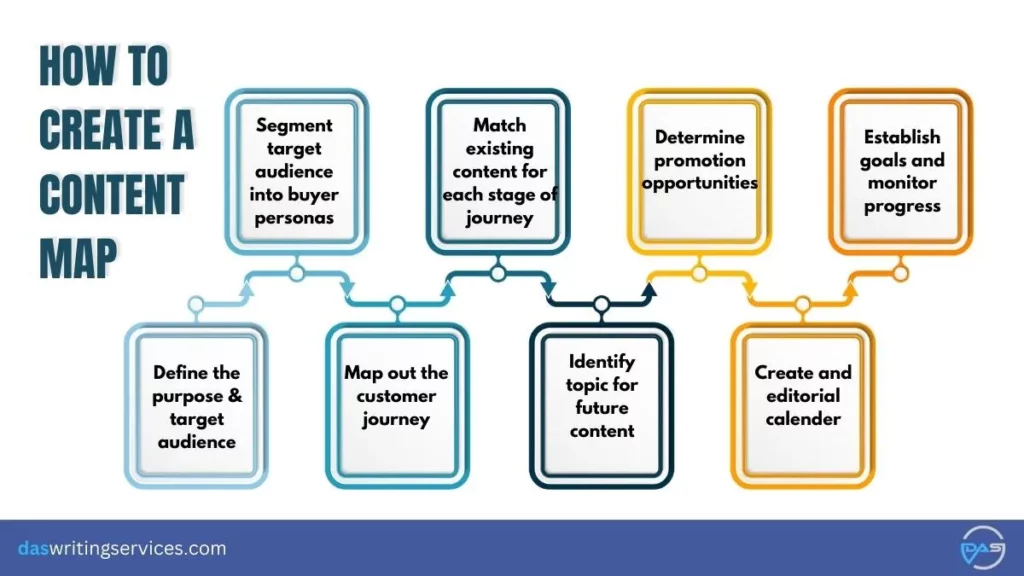
5. Deliver Marketing Communications at the Right Time
The timing of your communications can make or break your lead nurturing strategy. Reaching out too often risks overwhelming potential leads, while not reaching out enough can cause you to lose relevance. The solution is to establish a well-considered timeline for your outreach. Consistency is critical: monthly campaigns or weekly emails with fresh, engaging content are a great way to strike the right balance between over-communicating and under-communicating.
When a lead is ready to buy, you want your solution to be top of mind. Therefore, timing your communications to align with where the prospect is in their journey is essential for moving them to a sales-ready state.
Our Tactical Recommendations
We recommend implementing automated lead nurturing workflows, as clients often find this strategy effectively guides leads through their journey with minimal manual effort. Continuously monitoring engagement metrics helps refine your nurturing strategies, ensuring that your content remains relevant and impactful. Additionally, gathering insights through surveys and feedback forms enables you to adapt messaging, which typically enhances the effectiveness of your nurturing efforts.Get In Touch
What are the most effective strategies for nurturing long term B2B client relationships
Implementing effective lead nurturing strategies requires a multi-layered approach, ensuring that leads are engaged consistently and meaningfully across various touchpoints. Below are proven methods to enhance your lead nurturing tactics, each designed to build strong relationships and convert prospects into loyal customers.
Retarget with Ads
Retargeting ads play a critical role in nurturing leads by repeatedly showcasing your offers to prospects as they navigate the web. If you’ve ever visited a product page and later seen ads for that product on different sites, you’ve experienced retargeting in action.
This process works by tagging visitors to your website or those who have entered your marketing funnel through other channels. These tagged leads are then automatically served ads across an advertising network, such as Google Display Network, keeping your product or service top of mind as they continue their journey online.
Leverage SMS Marketing
SMS marketing can be a highly effective lead nurturing solution when used in the right context. As an opt-in strategy, SMS ensures you’re communicating with leads who have already shown interest in your brand.
Why SMS marketing works:
- It’s more cost-effective than many other advertising channels.
- Text messages don’t have to compete for attention in a crowded inbox.
- 89% of customers prefer texts to calls from businesses.
- SMS open rates can reach as high as 98%.
Like email campaigns, SMS can be used for a variety of purposes, such as offering time-sensitive discounts, confirming appointments, or announcing new products or services.
Score Your Leads
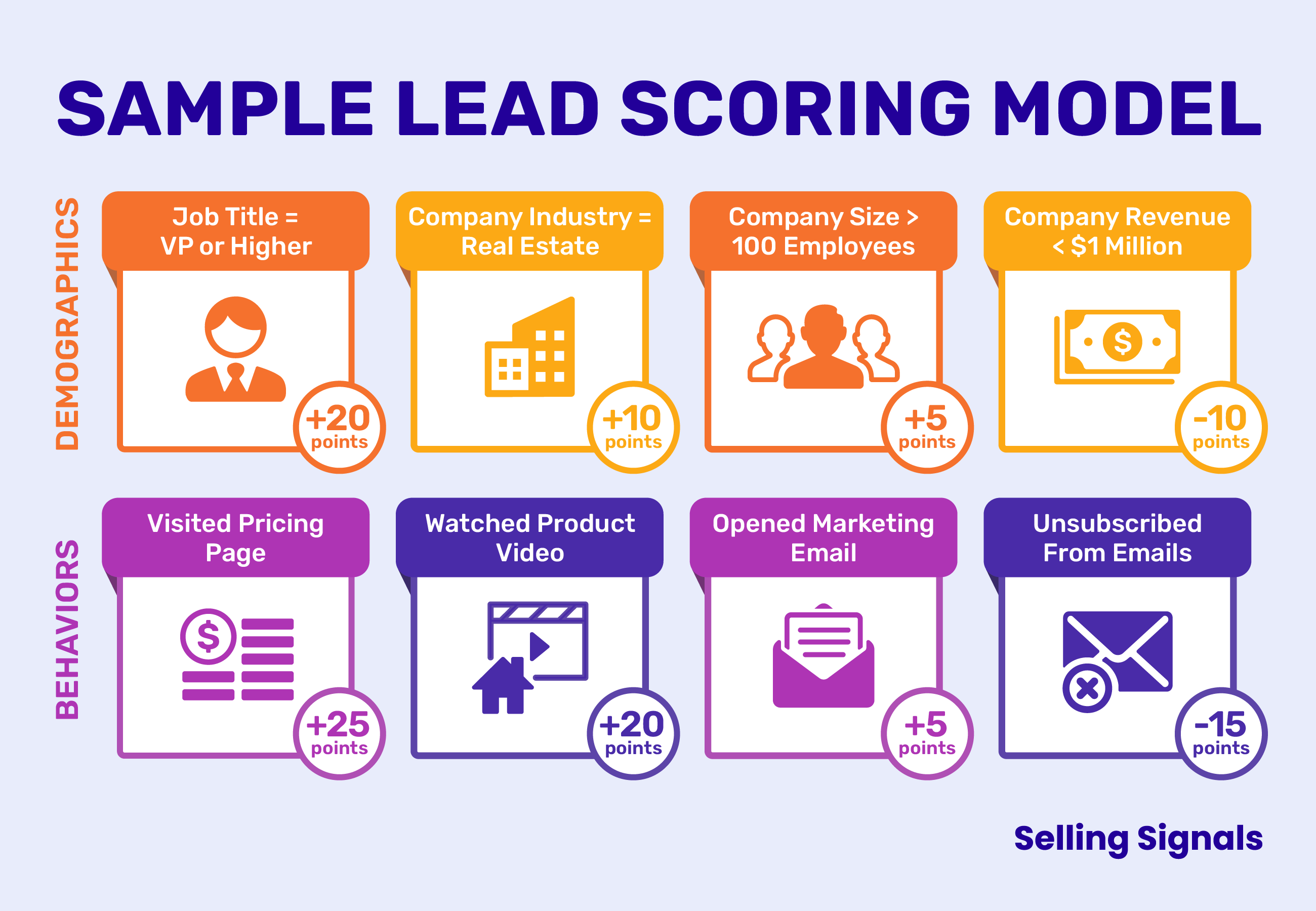
Lead scoring is an essential part of refining your lead nurturing strategies. By assigning value to leads based on characteristics such as product interest and purchase likelihood, you can better determine which lead nurturing tactics to apply.
Higher-scoring leads might require more personalised, high-touch follow-ups, while lower-scoring leads can be nurtured with automated campaigns. This allows for a more targeted approach, ensuring that your resources are focused on the most promising opportunities.
Source: Marketo Engage
Email Drip Campaigns
Email drip campaigns are an integral part of lead nurturing best practices. These campaigns involve sending a series of automated, pre-written emails over time to keep leads engaged.
For instance, a SaaS company might send a welcome email after a prospect signs up for a free trial. This could be followed by emails demonstrating various features of the service, and finally, a promotional offer to encourage the lead to subscribe.
Drip campaigns are an efficient way to provide ongoing value while guiding prospects through the sales funnel.
Personalised Follow-Ups
Personalised follow-ups based on a lead’s previous interactions with your brand can significantly boost engagement. If a lead has downloaded a particular eBook, for example, a follow-up email might provide additional resources on the same topic or suggest a product demo tailored to their interest.
These follow-ups help maintain a continuous dialogue, ensuring your brand remains at the forefront of the prospect’s mind. Even if they aren’t ready to buy immediately, this ongoing interaction ensures that when they are, your business is the first they think of.
Event-Triggered Automation
Event-triggered automation allows you to respond to specific actions taken by a lead, such as visiting a pricing page, opening an email, or downloading a resource. This can automatically trigger an email offering to answer any pricing questions or provide additional information.
This type of automation is highly effective in gauging a lead’s readiness to convert. If they’re not yet ready, you can cycle them back into an earlier stage of the funnel for further nurturing.
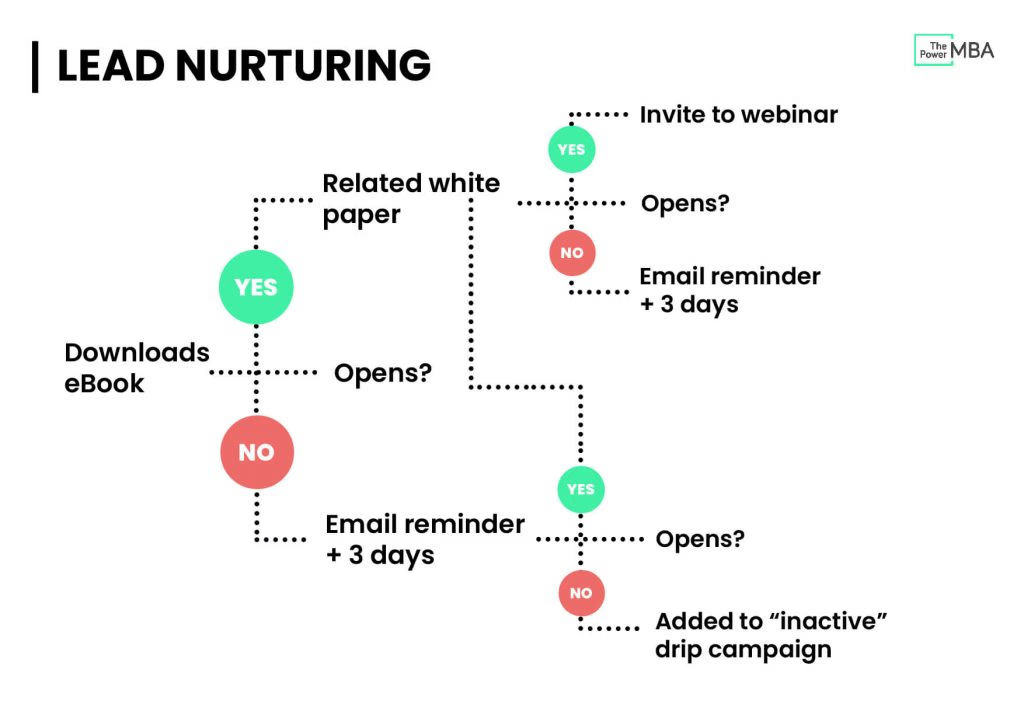
Strong Calls-to-Action (CTAs)
Your lead nurturing strategies will only be effective if leads know what to do next. A strong CTA should clearly outline the next step for the lead to take, aligned with their current position in the sales funnel and the urgency of their pain points.
By integrating CTAs with your lead scoring, you can personalise the content and ensure that each lead receives the most relevant next step. Email list segmentation, as mentioned, is one of the most powerful tools for personalising lead nurturing tactics, with 51% of email marketers agreeing on its effectiveness.
Timely Follow-Ups
One of the most critical elements of nurturing leads is timely follow-up. Once a lead has shown interest, whether by downloading content or engaging with your emails, it’s essential to respond promptly.
Maintaining the conversation helps build an ongoing relationship, keeping your product top of mind and significantly increasing the chances of closing the deal.







